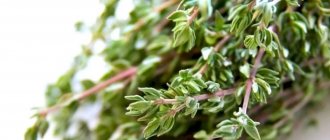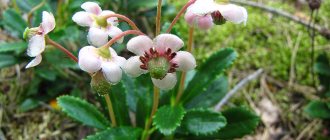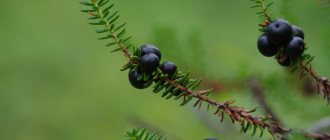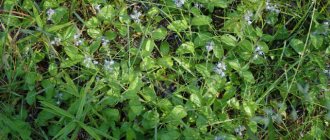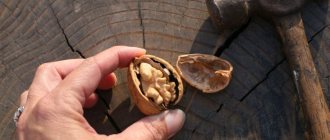What does horse sorrel look like, is it edible: description of the plant
Horse sorrel is a perennial, herbaceous plant, one of the species of the genus Sorrel of the Buckwheat family. Its Latin name is Rumex confertus.
IMPORTANT: The plant is also popularly called thick sorrel or horse sorrel.
This weed is the beneficial plant horse sorrel.
- Horse sorrel grows in Europe and Central Asia, in forests and forest-steppes, in meadows, in floodplains and on swampy, silty soil. Refers to weeds.
- The root of horse sorrel is short, but has many appendages.
- The height of the plant ranges from 90 cm to 2 m. Their diameter is approximately 2 cm.
- At the base of the erect stems of dense sorrel there are elongated triangular-ovate alternate leaves with blunt ends and wavy edges. The length of the leaves is up to 30 cm, width – up to 15 cm. The bottom of the leaf blade is densely covered with hard hairs.
- The inflorescence of horse sorrel is called thyrsus. It has the shape of a panicle and is formed from bisexual small flowers of greenish-yellow color. The plant blooms in late spring - early summer.
- In mid-summer, dense sorrel bears fruit with trihedral, oval-shaped nuts. The color of the fruit is brown, length – up to 7 mm.
- The plant reproduces by seeds and vegetatively.
Parts of the Rumex confertus plant.
IMPORTANT: Despite the popular name “sorrel”, horse sorrel leaves do not taste sour at all.
Edible horse sorrel. Its leaves and petioles are eaten in Central Asia. These parts of the plant, as well as its fruit, are used to feed chickens, geese, rabbits and pigs.
Thyrsae.
Botanical description
Horse sorrel is a large perennial herbaceous plant. This is a variety of sorrel with drooping leaves.
Botanical features:
- The basal leaves are light green in color, have a heart-shaped base, are no more than 20 cm long and up to 10 cm wide.
- The flowers are small, green, bisexual. They are collected in panicle-shaped inflorescences. The perianth leaves are small - 2-3 mm in length.
- The fruits are small nuts.
The ripening period occurs in July-October, and flowering in May-June
Horse sorrel root and seeds: medicinal properties and contraindications
The roots and fruits of horse sorrel are used for medicinal purposes. The special properties of these parts of the plant are due to their chemical composition.
Composition of thick sorrel roots.
Anthraquinone derivatives and tannins are also found in horse sorrel fruits.
IMPORTANT: Horse sorrel is a strong natural antibiotic.
Horse sorrel roots (dried).
In addition to being antibacterial, the herbaceous plant has the following beneficial properties:
- neutralize viruses
- relieve inflammation
- relieve spasms
- liquefy and remove mucus from the bronchi and lungs
- remove excess fluid from the body
- constrict blood vessels
- strengthen the walls of blood vessels
- stop the bleeding
- prevent the formation and growth of cancerous tumors
IMPORTANT: Since horse sorrel (roots) in small doses strengthens, in large doses it acts as a laxative, it is often used to treat intestinal disorders.
Decoctions of the dried roots of the plant treat patients with arterial hypertension.
Medicinal properties of horse sorrel.
It is prohibited to use horse sorrel as a medicinal plant:
- persons who are allergic to it
- pregnant women
- persons with diseases of the kidneys and urinary system, in particular pyelonephritis, oxalaturia and urolithiasis
Benefits for the body
Useful properties of horse sorrel:
- kills pathogenic bacteria and viruses;
- stops bleeding;
- has a laxative effect;
- removes stagnation of bile from the gallbladder;
- facilitates the discharge of sputum;
- cleanses the blood;
- strengthens the immune system;
- heals wounds, abrasions, burns;
- reduces blood pressure;
- calms the nervous system;
- dilates blood vessels;
- destroys parasites.
Traditional medicine does not recognize all the medicinal properties of horse sorrel.
Traditional healers confirm these actions and actively use the plant for the preparation of medicinal medicines.
Horse sorrel used in folk medicine. Horse sorrel infusion: how to make and use?
The main forms of folk medicines with thick sorrel are water and alcohol tinctures, as well as a decoction of the dried root.
RECIPE: Tincture of horse sorrel root in water. Needed:
- dried rhizome – 5 g
- boiling water – 200 ml
- The plant component should be poured into a glass container and pour boiling water over it.
- Place the dishes in a pan of boiling water and simmer for 30 minutes.
- The shelf life of the tincture is 72 hours.
IMPORTANT: A tincture with this ratio of plant component and water acts as a laxative. To achieve the fixing effect of sorrel roots, take 2.5 g per glass of boiling water.
A medicinal alcohol tincture is prepared from the roots of horse sorrel.
RECIPE: Tincture of horse sorrel root in alcohol. Needed:
- dried root - 4 tbsp. spoon
- alcohol 70% - 200 ml
- The plant component in a glass container is filled with alcohol, sealed and left in a dark place for 2 weeks.
- The dose is calculated in drops and, if necessary, diluted in 10 ml of water. For example, for rheumatism, 15 drops of tincture are drunk 2-4 times a day.
RECIPE: Decoction of horse sorrel root. Need to:
- dried root - 5 tbsp. spoons
- water – 1 l
- The herbal preparation is placed in a saucepan, filled with water and put on fire.
- After boiling, cook it for another quarter of an hour, allow to cool and drain through a fine sieve or cheesecloth.
- This decoction is used for gum disease (periodontal disease, gingivitis, stomatitis). They rinse the mouth with it.
- For colds, a decoction of 1 tbsp is used as an antiviral and expectorant. spoons of horse sorrel roots per glass of water. The amount of decoction is divided into three servings and taken throughout the day.
- This decoction is also suitable as an antispasmodic for painful periods.
A decoction of dried horse sorrel root.
Children with diathesis are bathed in a decoction of 100 g of dried thick sorrel rhizome in 3 liters of water, diluted in a standard-sized bathtub.
Emerald snow
The variety is a perennial hybrid. Its characteristics are as follows:
- ripening takes 46-52 days;
- spreading and raised rosette;
- slightly bubbly leaves, ovate shape, green color;
- yield - up to 7.5 kg per 1 sq. m.
Sorrel Emerald Snow has many advantages:
- cold resistance;
- possibility of growing in sunny areas and in partial shade;
- early sowing (April-May);
- the possibility of summer and winter sowing (carried out in September), which allows you to get an early harvest next year;
- high content of ascorbic acid, carotene, B vitamins, valuable organic acids;
- resistance to stemming;
- rapid growth of greenery;
- high productivity;
- versatility in application;
- Great option for freezing.
Emerald snow is used for food. The harvest can be harvested in June-September. It is recommended to freeze greens in small portions, drying them first.
Fresh greens of Emerald Snow are used as food without processing, boiled, and salted. Frozen sorrel is added to first courses, side dishes, casseroles, and pies.
Horse sorrel for hair
Rhizomes and leaves of horse sorrel are used in home cosmetology, in particular for hair care. Homemade cosmetics based on these parts of the plant are used:
- for hair nutrition
- to strengthen hair follicles
- to solve the problem of oily hair
- for restoring colored and damaged hair
- to eliminate scalp itching caused by allergies, psoriasis, neurodermatitis
Decoction 5 tbsp. spoons of dried roots in 2 liters of water rinse hair after washing it with shampoo or using homemade masks.
Horse sorrel decoction is used for hair care.
Another very effective rinse aid: 2 tbsp. spoons of dried leaves of horse sorrel and dried burdock roots are poured into 1 liter of water and boiled for 30 minutes, left until the broth cools to room temperature.
Contraindications
It is not allowed to use horse sorrel in the following cases:
- carrying a baby;
- stones in the kidneys;
- individual intolerance.
If you have kidney stones, do not use the plant because it contains oxalic acid.
Penetrating into the body, it promotes the formation of salts, which subsequently settle on the walls of the kidneys. This can lead to an exacerbation of the pathology. In childhood, home remedies based on sorrel can be used, but only under the supervision of a specialist and with strict adherence to the dose.
Horse sorrel for treating strawberries against diseases
Summer residents and gardeners who grow strawberries can take note: horse sorrel can protect the berries from parasites. Prepare a spray from the leaves of the plant:
- leaves in random quantities, as large as possible, are finely torn, placed in a bucket and filled with water
- the tincture is kept for 10 – 14 days
- The prepared infusion should be poured over the strawberry bushes so that it gets on the leaves
Strawberries sprayed with horse sorrel will not be attacked by whiteflies, which harm the berry harvest.
broadleaf
Another perennial crop variety, called old because it was one of the first to appear in 1961. Its characteristics are as follows:
- mid-season variety, growing season 45-50 days;
- loose and erect rosette;
- the leaves have an elongated ovate shape, dark green color;
- the length of the leaf blade is 14 cm, the width is half that;
- emergence of seedlings in 1-1.5 weeks;
- Harvesting begins when the leaves reach a length of 10 cm;
- yield - up to 5-6 kg per 1 sq. m.
Advantages of sorrel variety Broadleaf:
- fast germination;
- growing in one place for 4 years;
- cold resistance;
- possibility of growing in sunny areas and in partial shade;
- in cool weather, resistance to bolting;
- the possibility of growing in spring or before winter, the second option ensures an early harvest for the next year;
- greens are rich in vitamin C, carotene, B vitamins, organic acids;
- good yield;
- tender greens;
- versatility in use.
Broadleaf sorrel is consumed fresh and added to salads. It is also good for heat treatment and is used for soups and side dishes. The variety is excellent for canning, pickling and freezing.
Horse sorrel soup
A delicious lean soup is prepared from horse sorrel, for which you need:
- horse sorrel – 200 g
- lentils or bulgur – 200 g
- potatoes – 3 pcs.
- onion – 1 pc.
- greens (dill, parsley, cilantro)
- salt pepper
Soup with horse sorrel.
- For this soup, horse sorrel is boiled for 20 minutes after soaking and cutting.
- In a separate pan, cook the cereal - lentils or bulgur - until tender.
- Peeled, washed and cut into small cubes potatoes are sent to a saucepan with water to cook.
- While the potatoes are boiling, sauté the onions.
- Add cereal, aveluk and sautéed onions to the pan with almost ready potatoes. Cook together for 3 minutes.
- The soup is served with chopped herbs.
Cooking recipes
You can make delicious and healthy salads with horse sorrel. For the first recipe you will need the following ingredients:
- 50 g plant;
- egg;
- a tablespoon of sour cream or mayonnaise;
- any greens, salt and pepper to taste.
Cut the sorrel into small pieces, boil the egg and chop it too. Mix these ingredients, add herbs, salt and pepper, season with mayonnaise or sour cream.
For the second recipe you will need:
- 100 g each of sorrel, tomatoes, cucumbers;
- 50 g each of radish, green onions, green peas;
- 150 g meat;
- egg;
- salt and herbs to taste.
Chop the plant and vegetables, boil a hard-boiled egg, and also cook the meat. Then mix the ingredients, season as you wish, and add herbs. Season with mayonnaise or sour cream.
For the first course, you can prepare cabbage soup with horse sorrel. To do this you will need to prepare the following ingredients:
- 400 g of plant;
- 600 g pork;
- 600 g potatoes;
- carrot;
- bulb;
- 3 chicken eggs;
- 4 tablespoons of sour cream;
- vegetable oil;
- salt to taste.
Fill a pan with 2 liters of water, put the meat cut into small pieces in it and let it cook. About 20 minutes before readiness, add the potatoes. Chop the onion and carrots and fry lightly in vegetable oil. 5 minutes before they are ready, add them to the soup.
Chop the sorrel and also put it in the pan when the potatoes are ready. At the end of cooking, pour beaten eggs into the soup, turn up the heat until the dish boils, add salt to taste. This completes the preparation.
Before serving, add sour cream to a plate.
Horse sorrel: when to collect?
The time for harvesting horse sorrel depends on what part of the plant is needed:
- the root, used for medicinal purposes, is collected after the above-ground part of the plant dies, that is, at the end of autumn
- leaves used for food are collected in April or May
- fruits are harvested at the end of summer
The collected part of the plant is thoroughly washed and dried. Drying can take place under the sun, then the plant materials are laid out in one layer on a sheet of cardboard or plywood. During drying, the raw materials are periodically turned over to prevent rotting.
IMPORTANT: If you plan to prepare various dishes from thick sorrel leaves, they are braided and left to dry at room temperature.
Preparation of aveluk.
Rules for the procurement of medicinal raw materials
In order for the results from traditional medicine recipes to be maximum, it is necessary to properly prepare the raw materials:
- The root must be dug up after the upper part of the plant dies. It is dug up and cleared of soil and dirt. Then the root is cut into pieces and washed under running water. After this, the workpiece should be dried.
- Horse sorrel leaves and flowers can be harvested at any time. Needs to be collected and dried.
- The seeds are harvested along with the inflorescences, also dried and then carefully separated for further use.
Raw materials must be stored in a dark and dry place, preferably in plastic or fabric bags. It is important that moisture does not get there.
How to distinguish horseradish from horse sorrel?
Due to the similarity of plant leaves, gardeners often cannot figure out what is growing on their site, horseradish or horse sorrel. Although both of them are very useful, their taste properties and applications are very different. Therefore, it is fundamentally important to distinguish them.
IMPORTANT: Horseradish and horse sorrel are plants from different families. The first belongs to the Cabbage family, the second, as is already known, to the Buckwheat family.
- Before an unidentified plant blooms, it is difficult to identify it. But experienced gardeners believe that the shade of horseradish and horse sorrel leaves is somewhat different. The first one is lighter.
- You can also taste the leaves. In horse sorrel they are slightly bitter, while in horseradish they have a scorching pungent taste.
- When the plant blooms, the difference becomes obvious. Sorrel blooms in thyrsus of greenish-yellow flowers, horseradish - in clusters of flowers with 4 white obovate petals.
Flowering of horseradish and horse sorrel.
Horseradish and horse sorrel are similar in appearance.
Pests
Horse sorrel, like other crops, is attacked by insects that harm it. The most frequent guests are the following:
- Aphid. Prefers to live on the inside of leaves. It sucks the juice out of the grass, as a result of which it turns yellow, withers, the root system becomes weaker, and the plant dies. Aphids are afraid of soap, ash solution, tobacco, and garlic broth.
- Spider mite. This pest envelops the leaves in a web, which ultimately leads to wilting and drying out. You can fight ticks with a solution of soap, an infusion based on dandelions and burdock.
- Sorrel sawfly. Its caterpillars actively eat foliage. To eliminate insects, you can use chamomile infusion and a solution of laundry soap.
- Winter armyworm butterfly. She also leaves caterpillars that eat the shoots. You need to scare it away with the help of fermenting liquid. Just put a vessel with it under the bushes.
Thus, horse sorrel is a common plant that has beneficial properties and is used in folk medicine. But this grass is classified as a weed, so gardeners often have to take measures to destroy it.
X
Collection and preparation
The horse sorrel plant, the photo of which is located above, contains a significant amount of oxalic acid. This substance affects mineral metabolism. That is why it is necessary to collect and prepare Armenian grass in the first half of summer. During this period, the concentration of oxalic acid is minimal.
Raw materials are collected away from roads and populated areas in warm weather without precipitation. All parts are subject to preparation. The leaves, as well as the stems, collected in the first half of summer, are washed and then dried entirely. A shaded, ventilated place is suitable for drying.
The collection of horse sorrel seeds begins in July. They are carefully sorted and stored in glass containers. Root harvesting is carried out in autumn and spring. The raw materials are cleaned of dirt, washed and placed in a sunny place. The rhizome is then dried after preliminary grinding in the open air. In damp weather, you can use the oven.
Attention! The leaves have a shelf life of one year. For roots, this duration is tripled.
Horse sorrel can be frozen. Before storing in the refrigerator, the sheets should be washed, dried and cut.




